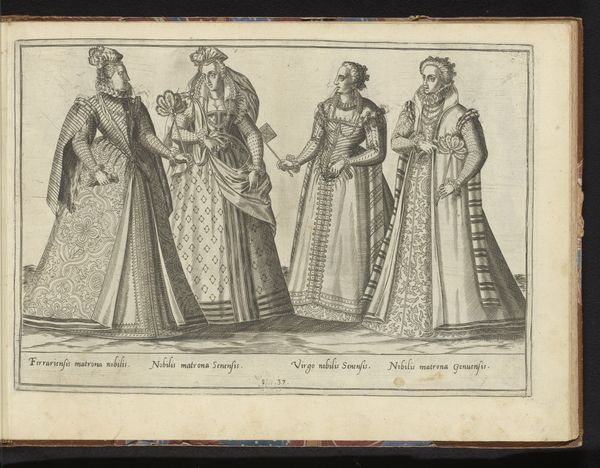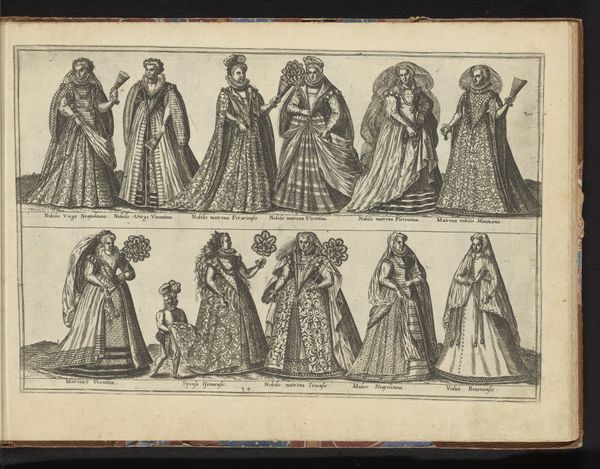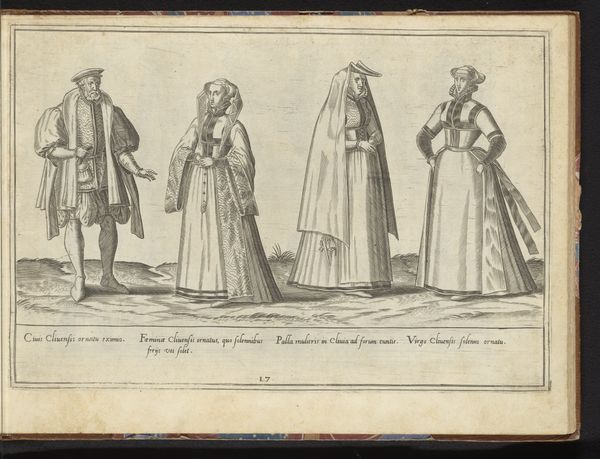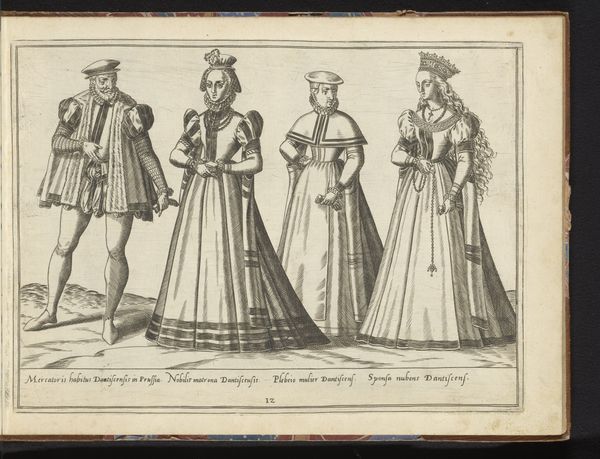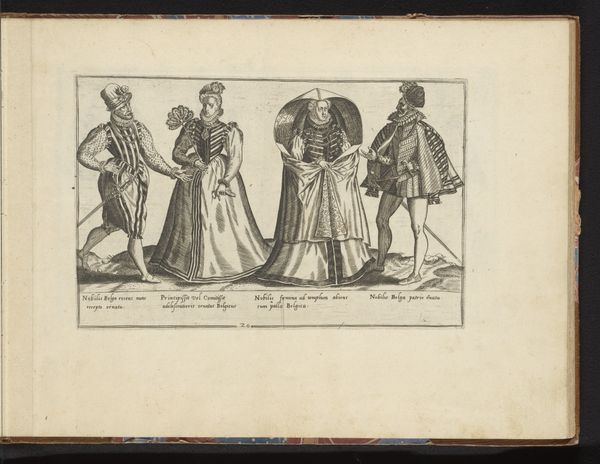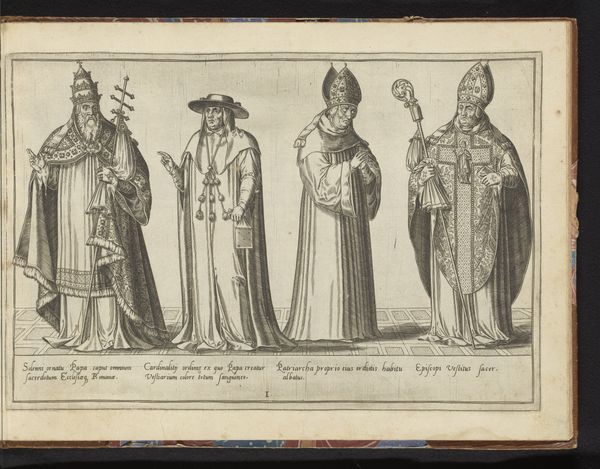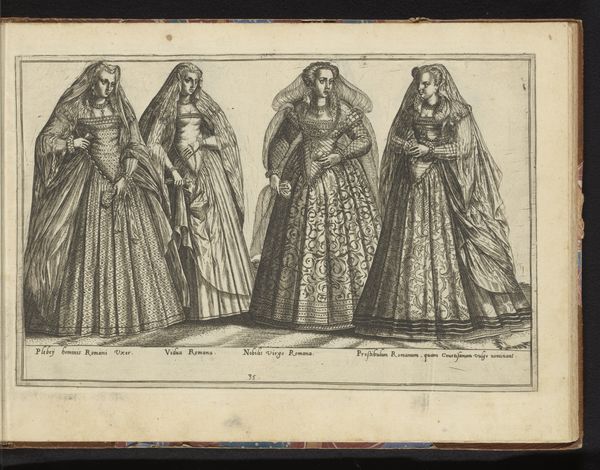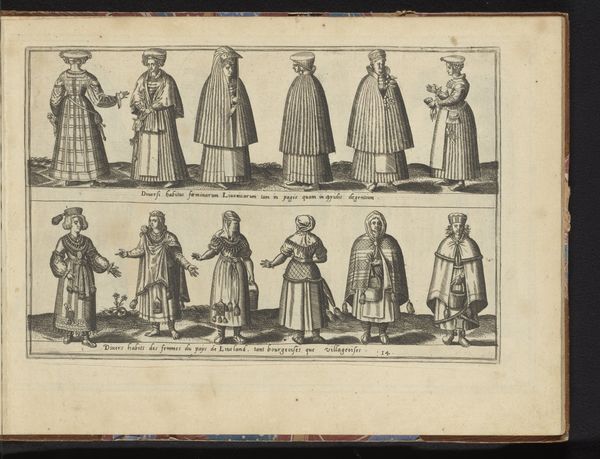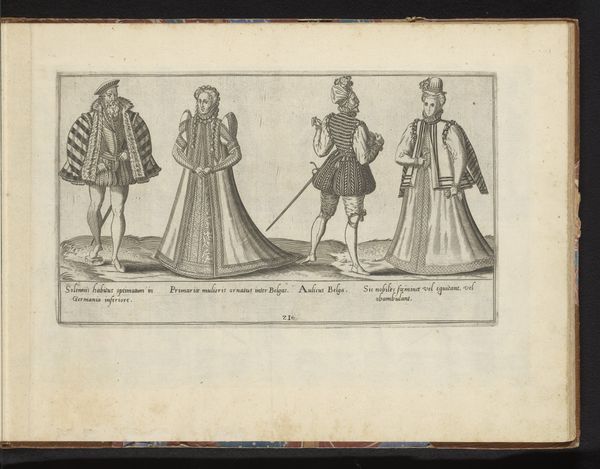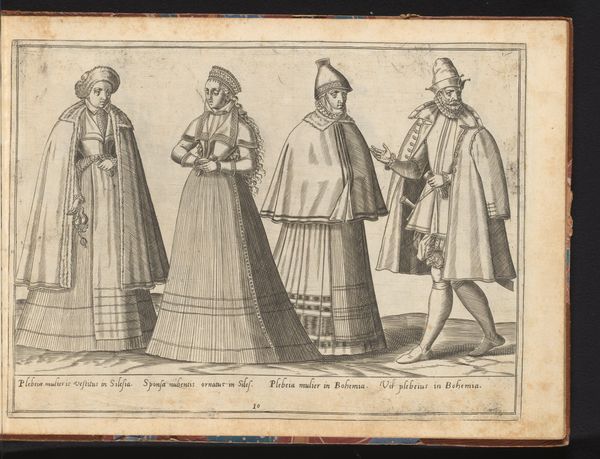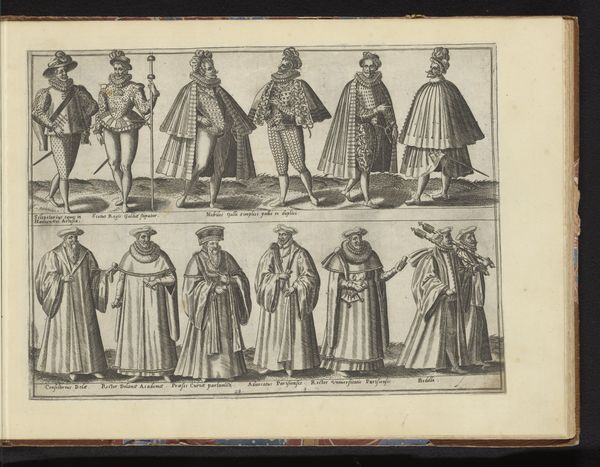
Vier vrouwen, gekleed volgens de Italiaanse mode van ca. 1580 before 1581
0:00
0:00
abrahamdebruyn
Rijksmuseum
drawing, print, paper, ink, engraving
#
portrait
#
drawing
# print
#
mannerism
#
figuration
#
paper
#
form
#
ink
#
coloured pencil
#
group-portraits
#
pen-ink sketch
#
line
#
academic-art
#
engraving
Dimensions: height 265 mm, width 360 mm
Copyright: Rijks Museum: Open Domain
Curator: Immediately striking are the fabrics depicted in this print. Look at the fineness suggested in the lines, giving us an idea of texture, drape, and social standing communicated through material. Editor: I’m immediately drawn to the almost sculptural quality of these women, particularly the restrictive high collars and precisely shaped sleeves. The formality is palpable. Curator: Precisely. This engraving, “Vier vrouwen, gekleed volgens de Italiaanse mode van ca. 1580,” or Four Women Dressed According to Italian Fashion of around 1580, now housed at the Rijksmuseum, meticulously documents Italian Renaissance fashion. Editor: How interesting to consider the networks required to disseminate such fashion knowledge. It's more than mere vanity. Curator: Absolutely. Abraham de Bruyn created this around 1580. It functions, in some ways, like a catalogue—a circulating image displaying current modes for an audience keen to emulate or simply consume visually. Think about the rise of printing technology; how these types of images democratized access to at least the *idea* of luxury. Editor: These aren't just sartorial choices; they’re social statements, projecting power. Each woman is individualized by city of origin: Perugia, Florence, Parma, Siena. And they subtly speak to the prevailing norms and values of each cultural center. What I’m getting at is that each element is consciously employed, even regulated by socio-political expectations of the time. Curator: Yes, and it reveals that textiles weren’t simply manufactured, bought, and worn. Their very production– the labor, the material sourcing, the construction, and the methods for representing the construction-- all contribute to its significance as a commodity and signifier. Editor: Fascinating how the act of dressing became a form of performance in the 16th century. Thank you for shedding light on this image's context; it adds volumes to our understanding of its message. Curator: Likewise. I appreciate your insight on how the sociopolitical landscape is woven quite literally into its threads.
Comments
No comments
Be the first to comment and join the conversation on the ultimate creative platform.

